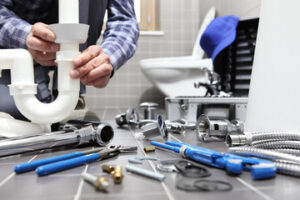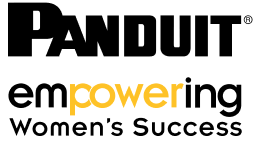Plumbing is essential to modern life, delivering fresh water and draining away waste. It’s also critical to ensuring hygiene and safety.

The plumbing system in your home is complex and consists of pipes, fixtures, and appliances. Visit Website to learn more.
If a faucet leak is left unchecked, it can damage your home’s fixtures and lead to a high water bill. You can prevent this from happening by checking the problem frequently and taking steps to fix it as soon as it appears. Some signs that you may have a leaky fixture include water spots in the home’s ceiling or walls, rattling noises when the faucet is turned on and off, and a jiggling faucet handle that won’t stay in place.
There are several ways that you can fix a leaky faucet, but the first step is to shut off the water supply valves under the sink. This will ensure that no water comes in as you take apart the fixture to make repairs. Next, remove the faucet handle and then turn off the spout assembly by removing the screw at the top of the center post (you may need to use a wrench to loosen it). Check the O-rings for wear or loss of lubrication and replace them as needed.
Another common cause of leaking faucets is a deteriorated valve seat. This is caused by sediment that builds up inside the component and prevents it from sealing correctly. Fortunately, you can usually replace the seat by itself, but you might need to do some research to find the right one for your faucet.
A leaking faucet can also indicate a larger issue with your plumbing system, such as low water pressure or even an underground pipe failure. These problems are often more difficult to repair and should be addressed by a professional.
A leaking faucet should be repaired immediately to avoid costly repairs and prevent mold from growing in your home. If the leak is persistent, it might be time to call a plumber. Williams Energy’s plumbing service can help you find the source of your leak and provide the expertise needed to repair it quickly. We offer 24/7 emergency services, so you can always count on us to be there for you when you need us most. Call us today to schedule your appointment!
Removing a Faucet Handle
The handle of a faucet plays a big role in the functionality of water fixtures. It’s also a key component when it comes to the look and aesthetic of any space. So, it’s no surprise that many homeowners find themselves in need of replacing their faucet handles.
The good news is that if you’re looking to make the switch to a new style or finish, or even fix a broken handle, it’s pretty easy to do. It just requires a little know-how and some simple tools.
Depending on the type of faucet, there are various ways to get the job done. Typically, it involves removing the decorative cap and unscrewing the handle. This will expose the inner components of the faucet and can help you identify where the leak is coming from. For instance, you may need to replace the washer or O-rings. Once you’ve figured out the issue, it should be fairly straightforward to reassemble everything and test for leaks.
One of the most common causes for a loose faucet handle is mineral buildup. In these cases, you can usually use a cloth or brush to clean the outer surface and crevices of the handle. If that doesn’t work, try applying a bit of penetrating oil such as WD-40 around the handle to loosen it.
From there, the process to removing and replacing a faucet handle varies between different types. For example, a ball or cartridge faucet might require removing the decorative caps and collar to access the valve stem and washer. Alternatively, a disk or cartridge-type faucet might have you remove the retaining clip and pull out the cartridge to access the ceramic disks.
Removing a Faucet Cap
Faucet covers protect the spigot and prevent freezing of the water pipe, which can cause it to burst and lead to expensive and messy repairs. However, if the cover itself is damaged or the cap doesn’t fit snugly, a leak can occur. If this is the case, replace both the cap and the retaining nut to ensure proper operation of your faucet.
If your faucet has a cartridge that regulates water flow by rotating a hollow metal or plastic piston, a leak around the spout or faucet body could mean that the cartridge needs replacing. Turn off the water supply before opening the faucet to release pressure and prevent flooding the area.
Remove the decorative cap, button or plug on the top of the handle, used to hide a screw. Pry it off with a flat screwdriver. Next, unscrew the handle screw and remove the handle. Remove any decorative sleeve or escutcheon on the handle and, using a wrench (or adjustable wrench), unscrew and pull out the cartridge. Install a new one, making sure that the holes align with the piston.
Replacing a Faucet Part
If your faucet’s handle doesn’t turn off fully or if water flows when the handle is removed, it may be time to replace the valve cartridge or stem. The cartridge or stem controls water flow and temperature and can become clogged with mineral buildup or worn out over time. Symptoms that it’s time to replace the valve cartridge include dripping or leaking from the handle, difficulty adjusting the water temperature, and unusual sounds or vibrations when you operate the faucet.
A squeaky faucet handle is often caused by friction between the cartridge or stem and the handle’s internal components, including the valve and O-rings. Lubricating these parts with a silicone-based lubricant can help reduce the friction and squeaks. A stiff handle can be a sign that the cartridge is worn out or corroded, so replacing it may be necessary.
Turn off the water supply valves under your sink to prevent water flow while you work on your faucet. Close the drain and put a towel in the sink to protect the surface and catch any dropped parts. Disassemble the faucet, putting each part in a plastic bag for easy reference when you’re shopping for a replacement. Lay the parts out on a flat surface, taking note of how each one is positioned for correct installation when you reassemble your faucet.
After completing your repairs, turn the water supply back on and test the faucet for leaks and proper operation. If the problem persists, call a plumber for professional advice or to perform the work.
To maintain the beauty and functionality of your faucet, wipe it down after each use with a soft cloth to remove any water spots or soap scum. Avoid using harsh chemicals or abrasive scrubbers, as these can damage the finish and cause the metal to rust. If your faucet is prone to leaking from the handle or base, clean the O-rings with a vinegar-water solution to prevent water from seeping through.


